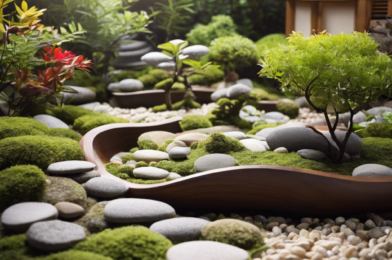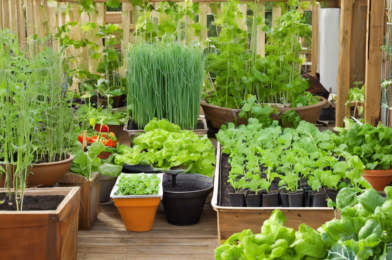Creating a Zen garden can be a rewarding project, offering a peaceful and tranquil space in your home or yard. These gardens originated in Japan, influenced by Zen Buddhism, and are designed to encourage meditation and a sense of calm. With careful planning and the right elements, you can create a relaxing retreat that transports you to a world of serenity.
Start by choosing a location that receives ample sunlight and has good drainage. Zen gardens are typically designed to be viewed from a single vantage point, so select a spot where you can create a clear focal point. Prepare the site by removing debris and unwanted plants, and consider adding a fence or screen to create a sense of enclosure and privacy.
The key elements of a Zen garden include rocks, which symbolize permanence and strength, and gravel or sand, which represents water and the flow of life. Arrange the rocks in odd numbers, as groups of three or five, to create a sense of balance and harmony. Rake the gravel or sand to create waves and swirls that suggest the movement of water, promoting a sense of calm and tranquility.
In a Zen garden, plants are selected for their simplicity and ability to enhance meditation. Choose evergreen trees and shrubs that provide a peaceful backdrop and symbolize longevity. Add herbaceous perennials with soft, delicate flowers in muted colors, avoiding bright, showy blooms that may distract from the calming atmosphere. Moss is also a popular choice, as it represents the passage of time and the beauty of aging.
The sound of moving water is a powerful element in a Zen garden, providing a soothing and calming atmosphere. Consider adding a small waterfall or fountain, ensuring it is made from natural materials such as stone or bamboo. The sound of water can help to block out noise from the surrounding environment, creating a peaceful sanctuary.
Zen gardens often feature wooden structures such as decks, pavilions, or bridges. These elements add a sense of depth and provide a place for seating or contemplation. When choosing materials, opt for natural, untreated wood that will weather gracefully over time, blending into the garden.
As you design your garden, keep in mind that simplicity and naturalness are key. Avoid clutter and overly complex designs, opting instead for open spaces that allow the eye to rest. Use natural materials whenever possible, and let the beauty of nature take center stage.
Lighting is an important consideration in your Zen garden, allowing you to create the right ambiance for evening relaxation. Soft, subtle lighting can enhance the garden’s features without overwhelming the space. Consider solar lights or low-voltage lighting to illuminate pathways and key elements, creating a tranquil and romantic atmosphere.
Finally, remember that a Zen garden is a personal space, and you should tailor it to your own tastes and preferences. Add personal touches that hold special meaning for you, whether it’s a favorite statue, a bench for meditation, or a small fire pit for contemplation. By creating a space that reflects your personality, you’ll find your Zen garden to be a truly relaxing retreat.
Creating a Zen garden is a journey towards finding inner peace and connecting with nature. Take your time to plan and design a space that resonates with you, and you’ll have a sanctuary to retreat to whenever life gets hectic. Embracing simplicity and natural beauty, your Zen garden will be a haven of relaxation and tranquility.


